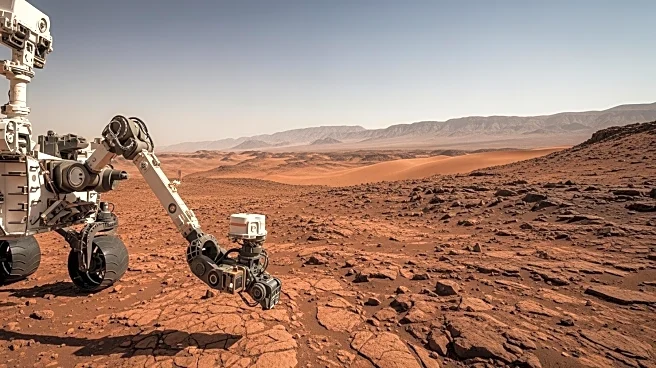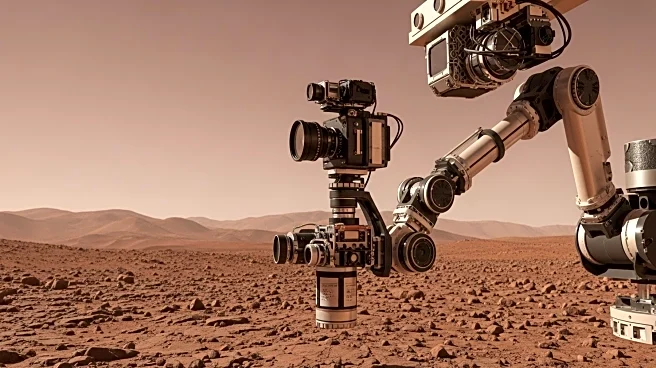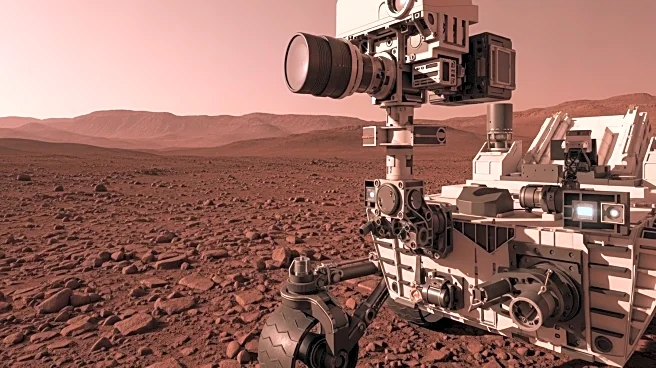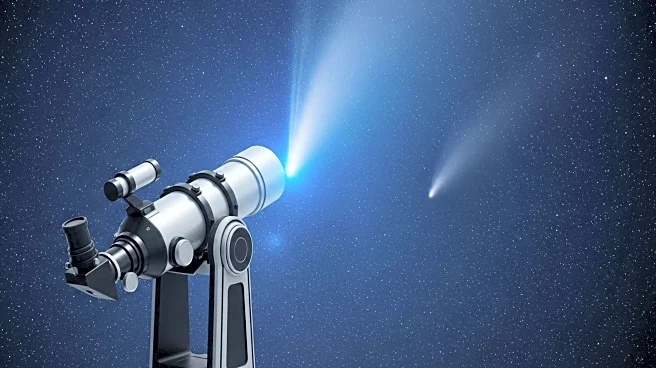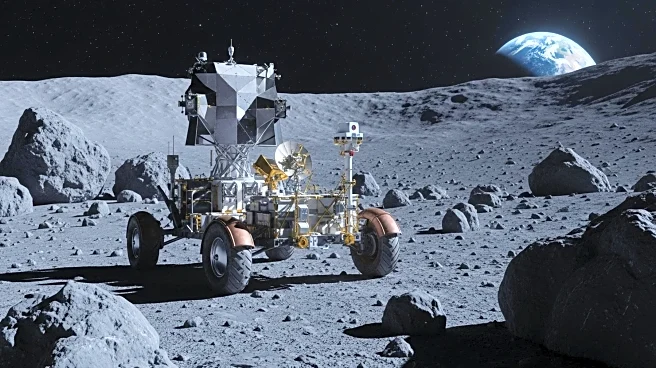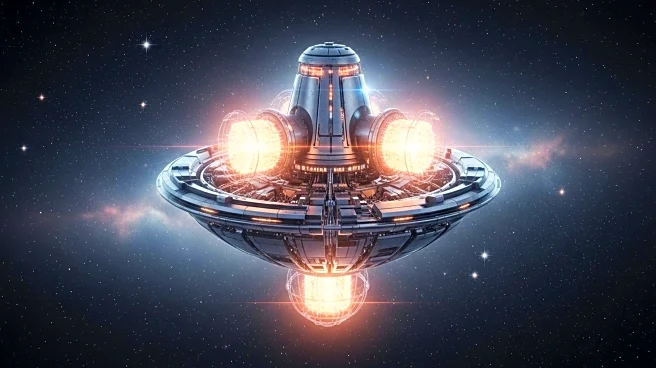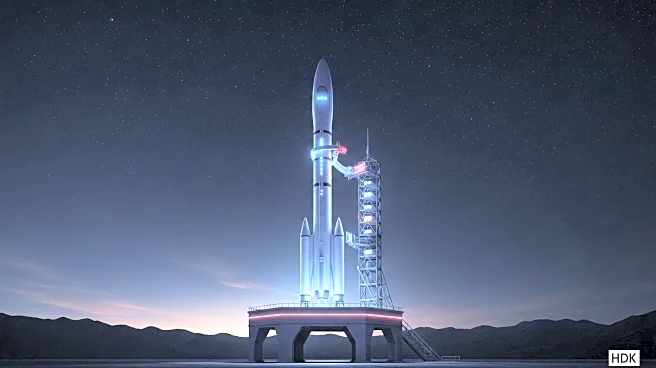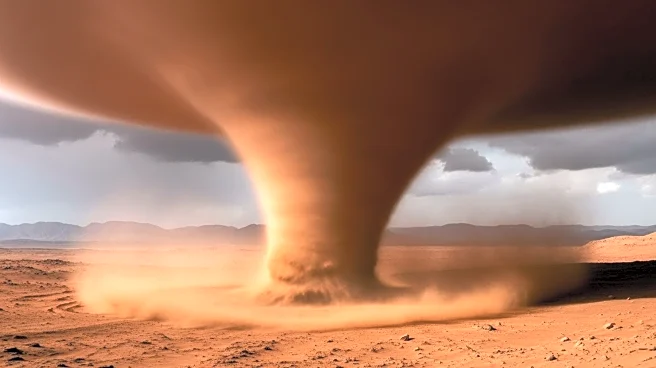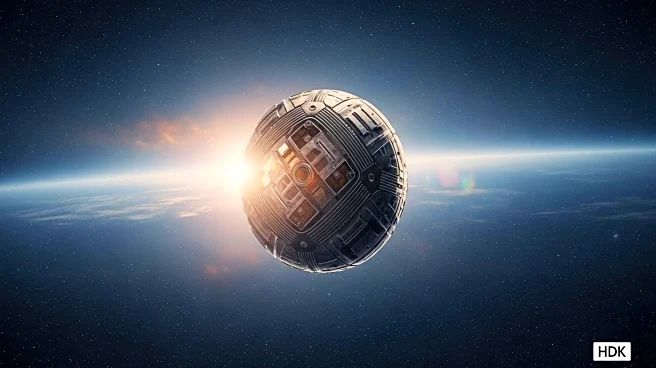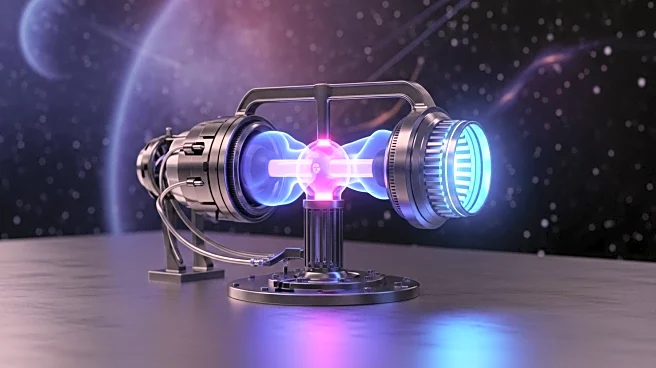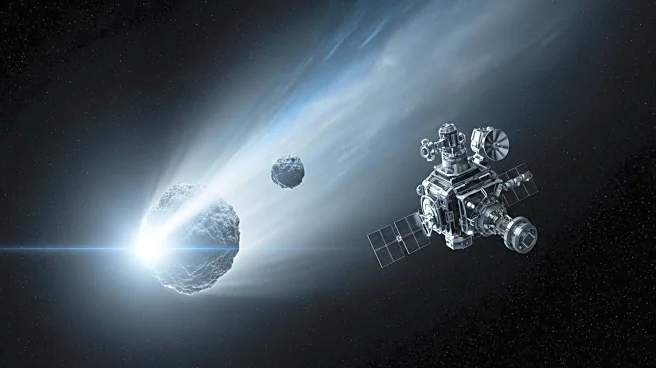What's Happening?
NASA's Mars rover Curiosity has successfully captured a detailed image of the Martian surface using its Mars Hand Lens Imager (MAHLI). The image was taken on January 9, 2020, during Sol 2640 of the Mars Science Laboratory Mission. The MAHLI, located on the turret at the end of the rover's robotic arm, is designed to capture close-up images of rocks and soil on Mars. The focus motor count position during the image capture was 13028, indicating the dust cover was open, allowing for a clear view of the surface. The MAHLI can use sunlight as an illumination source, although it is equipped with white light and ultraviolet LEDs for additional lighting options. This image contributes to the ongoing exploration and study of Mars, providing valuable data for scientists.
Why It's Important?
The image captured by Curiosity's MAHLI is significant as it provides detailed insights into the Martian surface composition and geology. Such images help scientists understand the planet's history and assess its potential for past life. The ability to capture high-resolution images allows researchers to analyze the texture and structure of Martian rocks and soil, aiding in the identification of minerals and other geological features. This information is crucial for planning future missions, including potential human exploration, as it helps determine suitable landing sites and areas of scientific interest.
What's Next?
Curiosity will continue its mission on Mars, capturing more images and conducting scientific experiments to further explore the planet's surface. The data collected will be used to refine models of Mars' geological history and climate. Future missions may build on Curiosity's findings, potentially leading to more advanced exploration technologies and strategies for human missions to Mars. The ongoing analysis of images and data from Curiosity will contribute to the broader understanding of Mars and its potential for supporting life.
Beyond the Headlines
The use of MAHLI and other imaging technologies on Mars highlights the advancements in robotic exploration and the importance of remote sensing in planetary science. The ability to capture detailed images from another planet demonstrates the progress in space technology and the potential for future discoveries. As exploration continues, ethical considerations regarding the preservation of extraterrestrial environments and the impact of human activities on other planets will become increasingly relevant.
